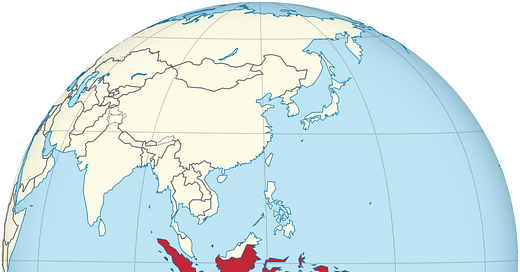Violence in Indonesia – January 2022
Dear reader, welcome to a monthly log of terrorism and separatist-related violence in Indonesia. This series will cover incidents and developments across the beautiful archipelago.
Terrorism
Well, it’s been a relatively quiet month, which is a good thing. Still, some interesting developments.
- So Indonesian authorities released some data and stats on terrorism in the country in 2021. Overall, 392 terrorists arrested (some figures say 364). The highest number in East Java, followed by North Sumatra, South Sulawesi, Jakarta, Central Java, and Lampung. The highest number of suspects are from Jemaah Islamiyah (JI). After that was Jamaah Ansharut Daulah (JAD), then the Mujahideen Indonesia Timur (MIT), and lastly suspects from the Islamist quasi-political quasi-vigilante all-thug Front Pembala Islam (FPI). The National Counterterrorism Agency said 5 provinces in Indonesia are vulnerable to spread of terrorism. These are West Java, East Java, and Central Java (no surprises here), West Nusa Tenggara, and Central Sulawesi (MIT, plus the violence in the 90s/2000s - no surprises again). The Agency also said that it detected 198 pesantren, or boarding schools, that were affiliated to terror groups. 119 out of them linked to JAD (I wrote previously how JAD was entrenched and more of an immediate threat), 68 with JI, and 11 with Jamaah Ansharul Khilafah (JAK). JAK is interesting coz it hasn't conducted more than a couple or so attacks since 2015. JAK is a JI splinter, but linked to Islamic State (IS). But unlike IS-linked groups, JAK is more of a 'play the long game', like its parent JI. It is more of a soft terror organization, with a focus on dawah over immediate jihad.
- One MIT terrorist was killed in a clash with security forces in Parigi Moutong Regency, Central Sulawesi. Authorities said that three MIT members are left and called on them to surrender to authorities. Is this the end of MIT? MIT’s leader Ali Kalora was killed last year, that may have been a death knell for the group. To note here though, is that even is MIT is eradicated, the area where it operates will continue to be a hotspot for extremism and radicalism. Other groups, including potentially new ones, will seek to replace it. The region in Central Sulawesi saw extreme levels of religious violence in the late 1990s and 2000s. This created an environment rife for Islamist terrorism. I believe it was Zachary Abuza who once said that the only places in Southeast Asia where the Islamic State could take territory due to local conditions is Marawi (which they did for five months in 2017), and Poso, Central Sulawesi. Something to think about.
- The former spokesperson of the banned FPI Munarman, is undergoing trial in Jakarta for links to terrorism. Now, some arguments can be made that the government’s clampdown on the FPI has been quite a bit politically-motivated over the last couple years. But Munarman pledged allegiance to the IS’s Abu Bakr al-Baghdadi in 2015. Can’t really use the “political persecution” argument here. An interesting tidbit, that there isn’t much open evidence for yet. Munarman was somehow linked to the 2019 Jolo bombing, which took place in the Philippines’ Sulu. That attack was conducted by JAD members who worked with the Abu Sayyaf Group. This is juicy.
Violence in the Papuan Provinces
The year started off with the TPNPB saying that it will escalate attacks against Indonesian forces in the Papuan provinces. Indonesian officials, meanwhile, said that they would pursue a “welfare” approach, over their hardened security force approach. Read between the lines: They kind of admit that their previous approach hasn’t working.
Yet, following the Puncak clash, Indonesian authorities said that they are reassessing their approach. The Puncak clash is the highest casualties Indonesian forces have suffered in one clash this year, and also in recent times. It will be interesting to see how security forces actually respond, outside of rhetoric.
So, four TPNPB clashes in January, all in hotspots of violence. Will the TPNPB be able to expand the conflict theater across more parts of the Papuan provinces?




